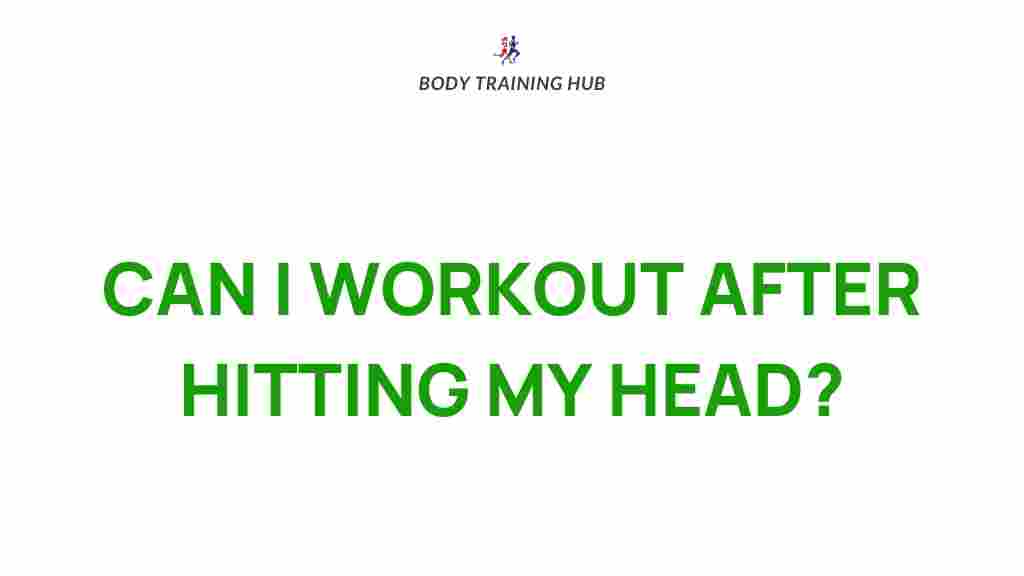Understanding the Impact of Head Injuries on Exercise Routine
Head injuries can drastically alter many aspects of a person’s daily life, including their ability to maintain an exercise routine. From mild concussions to severe traumatic brain injuries, the path to recovery often requires careful planning and adjustments. In this article, we’ll explore how head injuries affect physical activity, provide practical steps to safely resume exercise, and highlight key considerations for long-term fitness and well-being.
What Are Head Injuries?
A head injury refers to any trauma that impacts the scalp, skull, or brain. Common types include:
- Concussions: A mild form of brain injury caused by impact or sudden movement.
- Contusions: Bruises on the brain tissue that result from a direct blow to the head.
- Skull fractures: Breaks in the bone surrounding the brain.
- Traumatic brain injuries (TBI): More severe injuries that can lead to long-term neurological issues.
The severity and symptoms vary, but typical signs include headaches, dizziness, memory issues, and fatigue—all of which can hinder physical activity.
Why Exercise After a Head Injury Requires Caution
Engaging in exercise too soon after a head injury can exacerbate symptoms or delay recovery. Here’s why careful attention is critical:
- **Brain sensitivity:** The brain is highly vulnerable to repeat trauma immediately after an injury.
- **Cognitive strain:** Physical activity can elevate heart rate and increase blood flow to the brain, potentially worsening symptoms like headaches or dizziness.
- **Delayed healing:** Overexertion may slow the brain’s natural recovery process.
Step-by-Step Guide to Resuming Exercise After a Head Injury
1. **Consult a Healthcare Professional**
The first step after sustaining a head injury is to consult with a healthcare provider. A physician or neurologist will assess the severity of your injury and provide personalized advice on when and how to resume physical activity.
2. **Start with Rest**
Rest is essential in the initial phase of recovery. Avoid physical and cognitive stress for at least 24-48 hours or as recommended by your doctor.
3. **Gradual Return to Activity**
Once cleared by a professional, follow a gradual reintroduction of exercise:
- Light activities: Begin with walking or stretching.
- Moderate-intensity workouts: Introduce activities like yoga or stationary biking once symptoms are fully resolved.
- High-intensity exercises: Resume only after several symptom-free weeks.
4. **Monitor Symptoms Closely**
Track your progress and remain vigilant for signs of discomfort. If you experience headaches, nausea, or cognitive issues during or after exercise, stop immediately and consult your doctor.
5. **Incorporate Brain-Friendly Exercises**
Activities that improve coordination, balance, and focus—such as tai chi or pilates—can enhance both physical and neurological recovery.
Troubleshooting Challenges in Exercise Post-Injury
What If Symptoms Persist?
If symptoms persist beyond the expected recovery timeline, consult a specialist. Persistent post-concussive symptoms may require targeted therapies such as vestibular rehabilitation or cognitive-behavioral therapy.
How to Handle Setbacks
Setbacks are common, but they’re manageable with the right approach:
- Rest: Take a break from activity and prioritize rest.
- Modify intensity: Reduce the duration or difficulty of exercises.
- Seek guidance: Consult a physical therapist experienced in post-head injury recovery.
Maintaining Long-Term Fitness After Head Injuries
Adopting a sustainable fitness routine after recovering from head injuries is crucial for overall health and brain function. Consider these strategies:
- Focus on low-impact activities: Swimming, walking, and cycling are excellent choices.
- Prioritize safety: Use protective gear and avoid high-risk sports that could lead to reinjury.
- Listen to your body: Adapt your routine based on your energy levels and symptoms.
For more tips on optimizing your exercise routine after injury, check out our comprehensive fitness recovery guide.
Additional Resources and Support
Head injuries can be complex, and recovery varies from person to person. External resources such as the CDC’s Traumatic Brain Injury resources provide valuable insights and up-to-date information.
Conclusion
Recovering from head injuries while maintaining an active lifestyle requires patience, care, and professional guidance. By understanding the impact of head injuries, following a structured return-to-exercise plan, and prioritizing safety, individuals can regain their fitness and enhance their overall well-being. Remember, every step forward, no matter how small, is progress on your journey to recovery.
This article is in the category Strength & Recovery and created by BodyTraining Team
